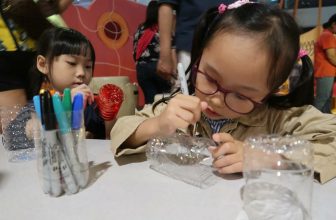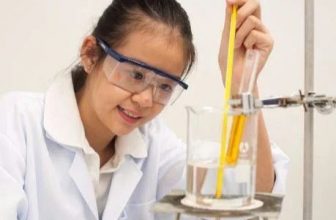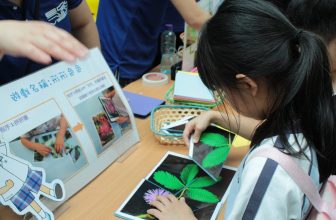
What is the difference between STEM and STEAM education and traditional subject teaching? The academic ability of basic subjects is still the foundation, but integration is the key. Five reminders are the key to pragmatic analysis and implementation.
Author: Huang Dunqing
STEM and STEAM are so popular, how are they different from traditional teaching? Why is STEM and STEAM education so important? STEM is the abbreviation of Science, Technology, Engineering and Math. As the name suggests, it is an emerging education topic that combines the four professional fields of science, technology, engineering and mathematics. From the actions of the US government, we can see that education policy is closely linked to “national competition.” It is not just a slogan, but related ministries and committees must discuss together the government actions to implement the plan. How to implement from policy to on-site teaching?
1. Back to basics, subject basic ability is still the key
Let children begin to touch these fields from a young age and take root early. In the public education system in the United States, from elementary school summer camps, there are options for STEM and STEAM, as well as enhanced classes with unsatisfactory performance in basic subjects.
Children in grade 7 start to have elective courses, which include art, mechanics, theater, robot design, and specific STEAM content in the second foreign language. The school also has professional maker classrooms for students to do. In high school, even in the same grade, each subject is divided into different levels of difficulty and level to teach students of different levels in accordance with their aptitude, and a large number of more difficult elective courses are provided to stimulate each student’s potential.
Microsoft’s survey report found that four-fifths of college students studying in the STEM field had decided to take this path before middle school or earlier. Their previous studies have allowed them to lay a good foundation in this field.
2. Advanced subject integration, teachers of each subject can initiate teaching innovation
To train students to integrate and use different subject skills, it is necessary to rely on teachers to drive them.
In each subject, the integrated application of STEAM can be added. For example, when doing physics experiments, the teacher may not fill out standard study sheets and reports for students, but increase the time for students to work, and do not stipulate the standard content of the experiment report. Including several sets of scenario trial calculations, adding calculation parts and cases, please take pictures and video recordings during the process, and then edit and organize these materials in the report and make a presentation. In the process, students need a lot of thinking, judgment, and design on their own, and the elements of STEAM are naturally integrated.
3. Subject study, deepen knowledge, not only learn knowledge, but use knowledge
STEAM can also be an independent course or special research.
In the DeSoto Independent School District (DeSoto Independent School District) office in Texas, a series of special courses and activities iSTEAM3D Magnet Academy was launched . Therefore, when the students of DeSoto West Middle School are studying the city, it is not the teacher giving lectures, the students copying notes or reciting, but the practice of building the city.
They need to discuss and design roads, buildings, housing, commercial buildings and facilities, living and working models, and also consider infrastructure and public facilities such as water, electricity, and lighting, and use 3D printers to build the city.
In this way, STEAM is not only about learning these subjects, but about integrating them. Students must learn to ask questions, find answers, and solve them by hand, which is the experience they will face in higher education or the future workplace.
Georgette Yakman, who worked as a STEAM teaching consultant in Virginia, explained that students should use more technology and tools, not just writing exercises. Teachers need to teach students how to organize, interpret and use the information they get, not just lectures.
4. Create opportunities for education, learning is everywhere in daily life
Not only for specific classrooms, but also for students’ daily study and life courses, they must also be widely integrated with these sciences. For example, many primary and secondary schools use emails, text messages, and portals to notify students and parents of important matters, instead of sending notices. Even traditional liberal arts such as English can use e-books, read apps, and record pronunciation on the iPad. , Write exercises and essays, and then send them to the teacher via the Internet.
STEM education must also create opportunities for education. For example, the Winnetka Public School District in Illinois designed Earth Day as “Earth Week”, designing different green life activities and themes throughout the week and every day. It is not only used in natural sciences to introduce ecology or Warming issues (science), including how to use digitization to save paper (technology), daily life energy saving techniques, such as riding a bicycle instead of driving (engineering), calculating impact benefits (mathematics), and using plants to beautify the environment (art) , Do it yourself environmentally friendly cleaner without pollution.
5. Consistent STEM and STEAM education from elementary school to university
When it comes to higher education, the United States also provides more basic STEAM subjects in various departments. For example, there are more and more information technology courses in medical schools to assist the development of biotechnology and precision medicine. In the Department of Diplomacy of Georgetown University in Washington, students are also required to take courses in natural sciences and technology to cope with the increasingly complex international situation. In aerospace, which emphasizes basic research and innovation, the STEM4 subject must be more difficult, because with good internal skills, it is possible to integrate cross-field capabilities and develop them.
STEAM education is not only the integration of different disciplines, but also more than fun, but also teaches the ability to judge and solve problems.
The iSTEAM series of topical courses in the Disuo School District actually contain the standard core knowledge and skills required by the Texas government, including problem-based learning activities. Students have to face open subject questions, find information on their own, and cooperate with others. , Innovation, etc. to solve real-world problems.
East Timor entrusted junior high school ( DeSoto East Middle School ) of science teacher Howard (Joey Hayward) pointed out that in the design of their robot, did not use textbooks, but students should check the internet a lot of information, and compare different robot program blueprint. In this process, students must exercise the core skills required above. But learning in a traditional classroom does not necessarily have the opportunity to experience these processes.
The promotion of STEM and STEAM has already seen results. Jo Green-Rucker, the textbook designer of the iSTEAM project in the independent school district entrusted by the Emperor, pointed out that the students in the iSTEAM project performed better than the students taught in the traditional classroom.
Educational Leadership (Educational Leadership) has published a report. Tracking studies in New York and Arizona have found that STEM education makes students’ academic performance better. Good, or in the new learning environment, they will be more serious and perform better; but some people think that the indelible test results directly show the contribution and support of STEM education to these children.
Source of reference: Parent-child world





